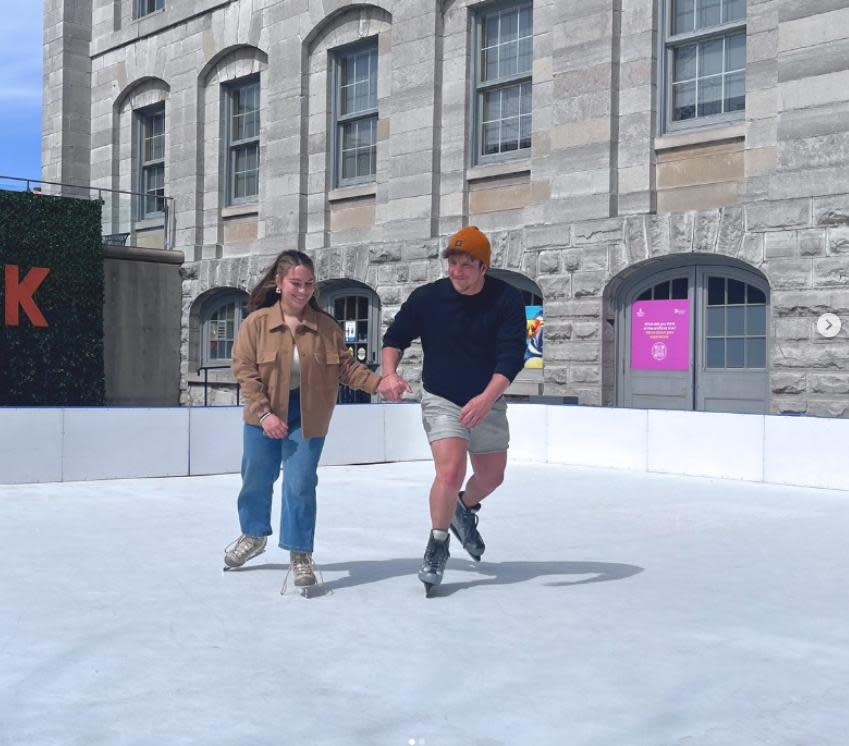Kingston gives skaters a feel for synthetic ice

Spring is well underway but you don't need to pack away your skates just yet if you live near Kingston, Ont., thanks to an outdoor synthetic ice rink installed in the downtown core.
You'll need to hurry though — the rink will be dismantled Monday.
The City of Kingston and the downtown Kingston Downtown Business Improvement Area (BIA) partnered to open the rink, which is located by the amphitheatre at Springer Market Square near city hall.
The rink is large enough to skate on, but not big enough for a hockey game.
Marijo Cuerrier, executive director of the BIA, said the opportunity came at the right time after a disappointing skating season due to an unseasonably warm winter.
"A lot of time, energy and water went into trying to maintain a Canadian tradition that because of the weather conditions this year just wasn't possible," she said.
Typically, the outdoor rink at Springer Market Square is open for 20 weeks of skating, but this year they only got in about 10 weeks, Cuerrier said.
Cuerrier said she hopes the synthetic ice rink will help more people enjoy the pastime, and for longer. For some athletes, artificial ice also provides an opportunity to continue training through the summer.
A different feel
Sharon Nixon, head coach of Queen's University's figure skating team and owner of Kingston Skating Academy, called synthetic ice "amazing," and noted some athletes and coaches install their own synthetic surfaces in basements, backyards and garages.
Synthetic ice is low-maintenance, needing only occasional mopping or pressure washing, depending on the use.
People who've experienced synthetic ice have noticed skating on it lacks the glide of natural ice. Cuerrier said some residents have described the Springer Market Square rink as more "sticky" than the real thing.
Nixon said that difference can actually be useful for training.
"For a learning skater or a hockey player trying to work on their power, glide and stride control, and build resistance, it can be a really good teaching tool," Nixon said.
Nixon herself likened the move from real ice to synthetic to going from figure skates to roller blades.
Adapting to synthetic ice is a requirement for figure skaters who want to perform on cruise ships, for example, because they use synthetic ice, Nixon said.
There's another big advantage, she added: "When you fall, at least it's not cold. It's still gonna hurt, but you're not dealing with frozen limbs."
Skaters can access the rink daily from 8 a.m. to 10 p.m. It will remain open until April 23.


